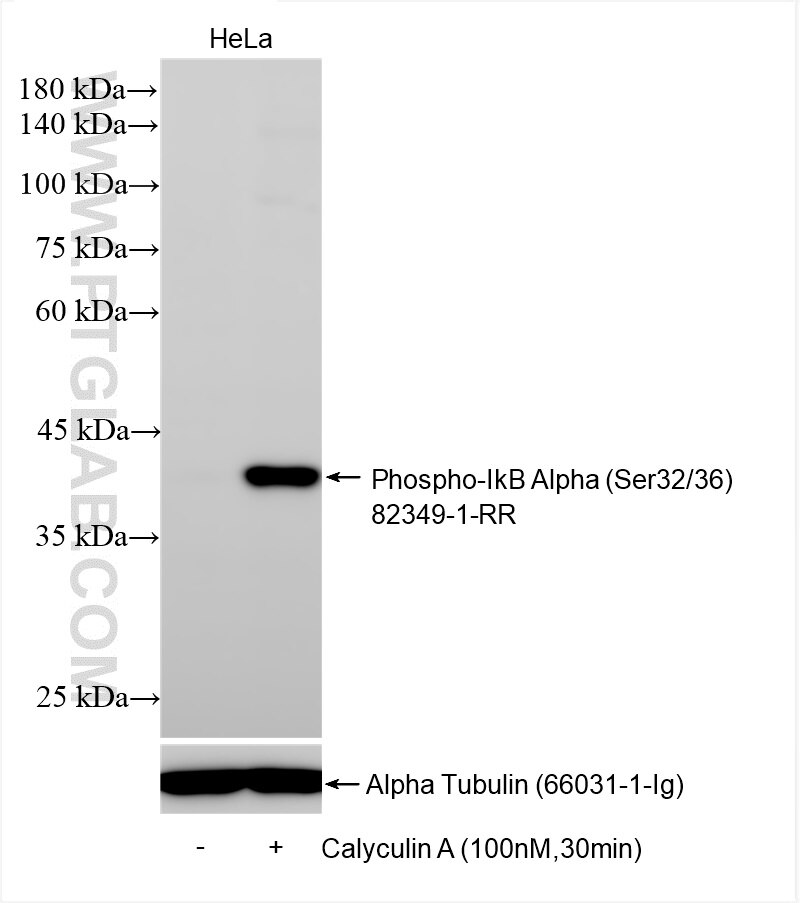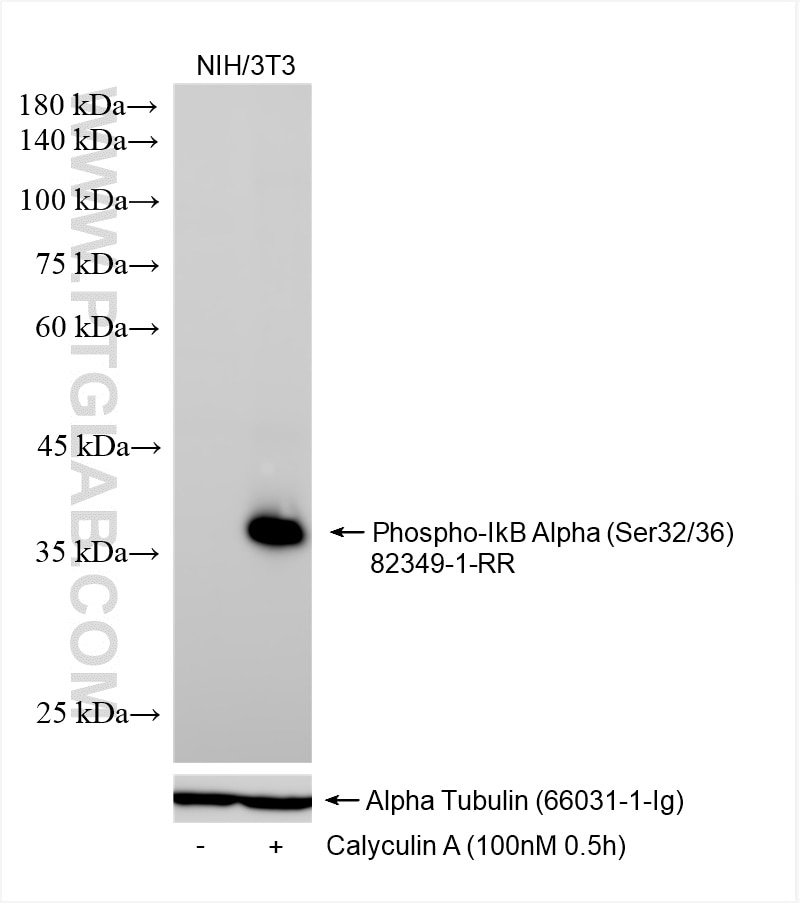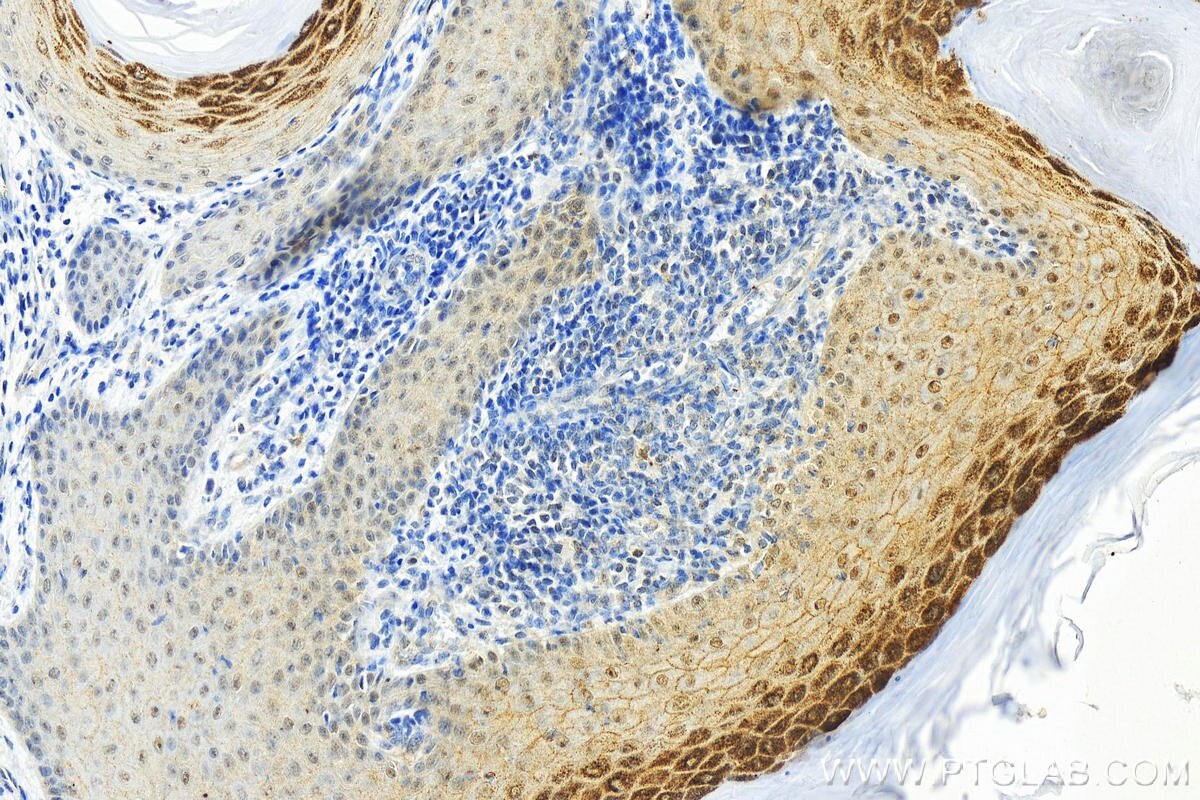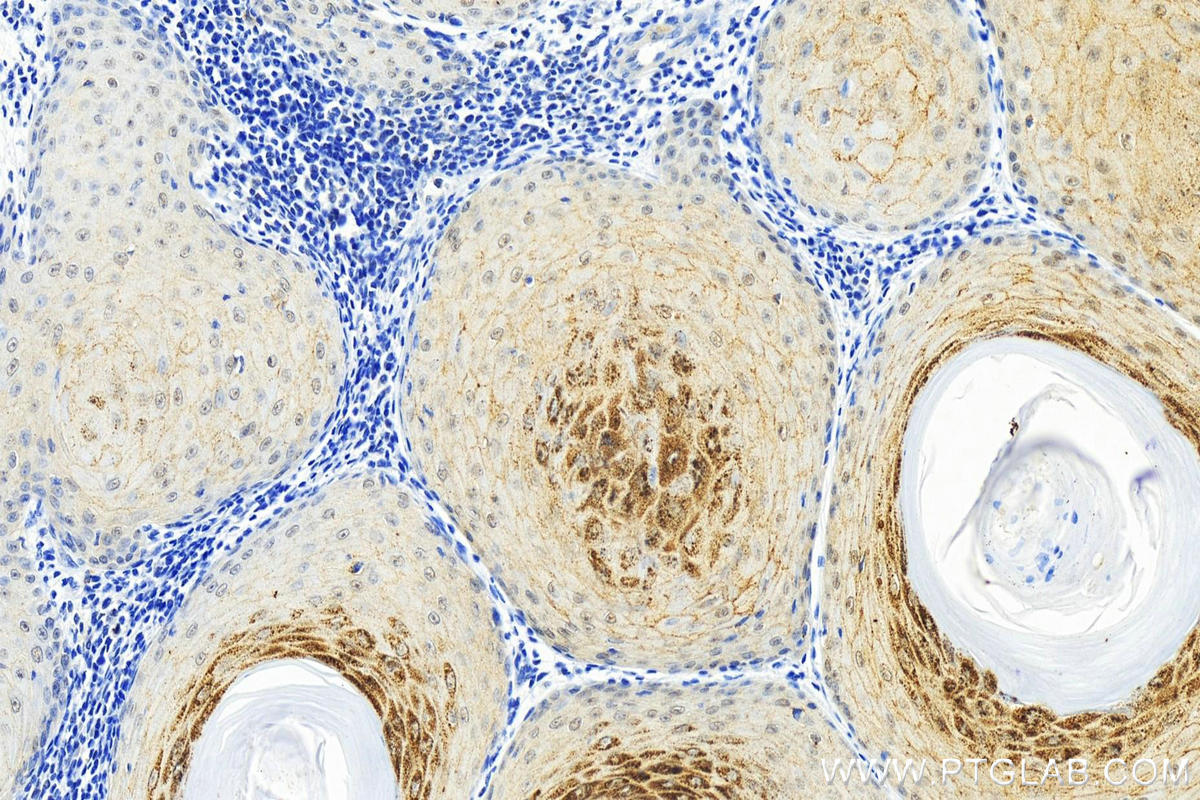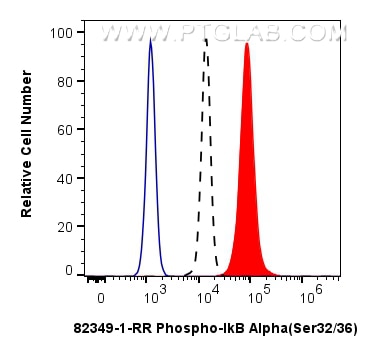Tested Applications
| Positive WB detected in | Calyculin A treated HeLa cells, Calyculin A treated HSC-T6 cells, Calyculin A treated NIH/3T3 cells, rat liver tissue, mouse liver tissue |
| Positive IHC detected in | human skin cancer tissue Note: suggested antigen retrieval with TE buffer pH 9.0; (*) Alternatively, antigen retrieval may be performed with citrate buffer pH 6.0 |
| Positive FC (Intra) detected in | Calyculin A treated HeLa cells |
Recommended dilution
| Application | Dilution |
|---|---|
| Western Blot (WB) | WB : 1:1000-1:4000 |
| Immunohistochemistry (IHC) | IHC : 1:1000-1:4000 |
| Flow Cytometry (FC) (INTRA) | FC (INTRA) : 0.06 ug per 10^6 cells in a 100 µl suspension |
| It is recommended that this reagent should be titrated in each testing system to obtain optimal results. | |
| Sample-dependent, Check data in validation data gallery. | |
Published Applications
| WB | See 78 publications below |
| IHC | See 1 publications below |
| IF | See 2 publications below |
Product Information
82349-1-RR targets Phospho-IkB Alpha (Ser32/36) in WB, IHC, IF, FC (Intra), ELISA applications and shows reactivity with human, mouse, rat samples.
| Tested Reactivity | human, mouse, rat |
| Cited Reactivity | human, mouse, rat, pig, chicken, zebrafish |
| Host / Isotype | Rabbit / IgG |
| Class | Recombinant |
| Type | Antibody |
| Immunogen |
Peptide Predict reactive species |
| Full Name | nuclear factor of kappa light polypeptide gene enhancer in B-cells inhibitor, alpha |
| Calculated Molecular Weight | 36 kDa |
| Observed Molecular Weight | 36 kDa |
| GenBank Accession Number | BC004983 |
| Gene Symbol | IkB Alpha |
| Gene ID (NCBI) | 4792 |
| RRID | AB_3073626 |
| Conjugate | Unconjugated |
| Form | Liquid |
| Purification Method | Protein A purification |
| UNIPROT ID | P25963 |
| Storage Buffer | PBS with 0.02% sodium azide and 50% glycerol, pH 7.3. |
| Storage Conditions | Store at -20°C. Stable for one year after shipment. Aliquoting is unnecessary for -20oC storage. 20ul sizes contain 0.1% BSA. |
Background Information
Nuclear factor of kappa light polypeptide gene enhancer in B-cells inhibitor, alpha (NFKBIA, synonyms: IKBA, MAD-3, NFKBI). NFKB1 or NFKB2 is bound to REL, RELA , or RELB to form the NFKB complex. The NFKB complex is inhibited by I-kappa-B proteins (NFKBIA or NFKBIB), which inactivate NF-kappa-B by trapping it in the cytoplasm. Phosphorylation of serine residues on the I-kappa-B proteins by kinases (IKBKA, or IKBKB) marks them for destruction via the ubiquitination pathway, thereby allowing activation of the NF-kappa-B complex. Activated NFKB complex translocates into the nucleus and binds DNA at kappa-B-binding motifs such as 5-prime GGGRNNYYCC 3-prime or 5-prime HGGARNYYCC 3-prime. The antibody also detects the phosphorylated form of the NFKBIA (IkB Alpha) (PMID: 16904979, PMID: 28990531 PMID: 10455908).
Protocols
| Product Specific Protocols | |
|---|---|
| IHC protocol for Phospho-IkB Alpha (Ser32/36) antibody 82349-1-RR | Download protocol |
| WB protocol for Phospho-IkB Alpha (Ser32/36) antibody 82349-1-RR | Download protocol |
| Standard Protocols | |
|---|---|
| Click here to view our Standard Protocols |
Publications
| Species | Application | Title |
|---|---|---|
Adv Sci (Weinh) Reprogramming Lung Redox Homeostasis by NIR Driven Ultra-Small Pd Loaded Covalent Organic Framework Inhibits NF-κB Pathway for Acute Lung Injury Immunotherapy | ||
EMBO Mol Med Targeting HPK1 inhibits neutrophil responses to mitigate post-stroke lung and cerebral injuries | ||
Sci Total Environ Glycidol induces necroptosis and inflammation through autophagy-necrosome pathway in renal cell and mice | ||
Int J Biol Macromol Flammulina velutipes polysaccharide exerts immunomodulatory function involving RSAD2 to regulate the NF-κB/MAPK signaling pathway in RAW264.7 macrophage cells and in mouse spleen cells | ||
Int J Biol Macromol In vitro and in vivo immunomodulatory activity of acetylated polysaccharides from Cyclocarya paliurus leaves | ||
Int J Biol Macromol Structural characterization of an apple polysaccharide and its anti-inflammatory effect through suppressing TLR4/NF-κB signaling |

